
Anyone who is growing or planning to grow their own produce should be composting as well. This ensures a healthy garden and a bountiful harvest. It’s easy, it’s free and it benefits the environment, too!
Twin Chambers: Designed with 2 chambers, the tumbling composter allows you to compost in batches; One side "cooks" while you add fresh organic material to the other, allowing for an efficient, uninterrupted flow of rich, healthy compost.
To get started you’ll need a compost bin, of course! You can buy one but why not make one yourself using repurposed materials you might already have? The right or best option for your garden will depend on a couple of factors…
One of those factors is the size of the composter that you need. Consider how large your yard is and how much plant matter you will compost. How much kitchen waste can you add? Remember that you can also compost paper and cardboard, although it does slow the process.
You should also decide which of the two types of compost bins you want to have – will it be a stationary bin or a rotating compost tumbler? All compost piles require to be turned regularly to combine decaying materials and provide oxygen. However, having a compost tumbler makes the composting process faster. If you need your compost in as fast as a week, then a compost tumbler is for you. A stationary bin is good if you have a nice, sunny spot to put your compost bin on. Of course, which kind to choose will also depend on the materials available to you.
Let worms transform your kitchen scraps into nutrient-rich organic fertilizer.
Now here are some materials that make great compost bins. Have a look and read more about them to help you decide what type of DIY compost bin to make!
7 DIY Compost Bins Ideas
Contents
Click on any image to start the lightbox display. Use your Esc key to close the lightbox. You can also view the images as a slideshow if you prefer ![]()
Plastic Milk Crate
This is a good and inexpensive option for backyard gardeners with a small space, who only need a relatively small amount of compost for their yard. It’s vertical, has plenty of air circulation, easy to use, and inexpensive.

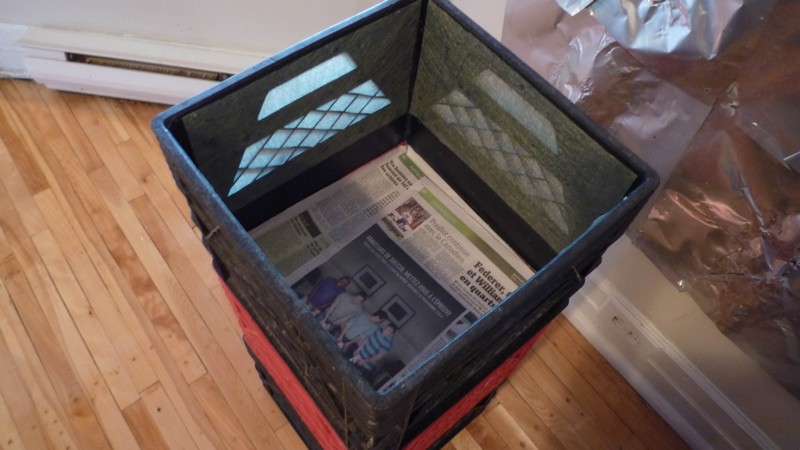
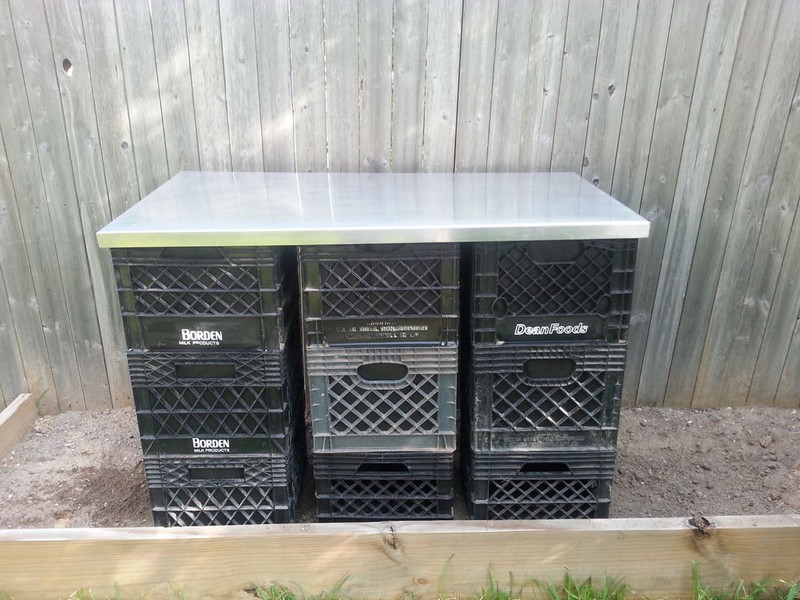
Pallets
Pallets are a versatile and readily available material for constructing a compost bin of virtually any size. If you keep rabbits, position the compost bin adjacent to the cabinet to utilize rabbit manure directly, which is an excellent compost accelerator. Pallets can be modified to include open fronts for easy access or lids to cover the compost. Ensure enough space between the slats for airflow, or add additional gaps if needed.
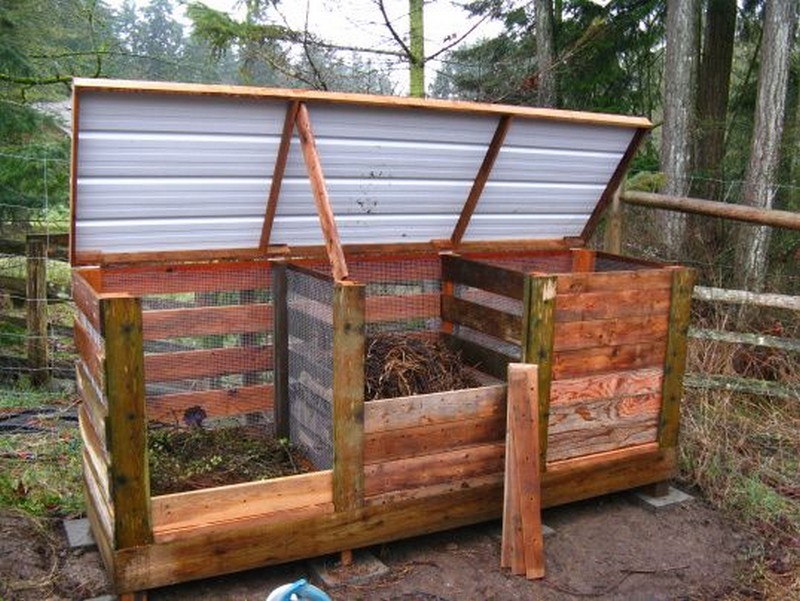

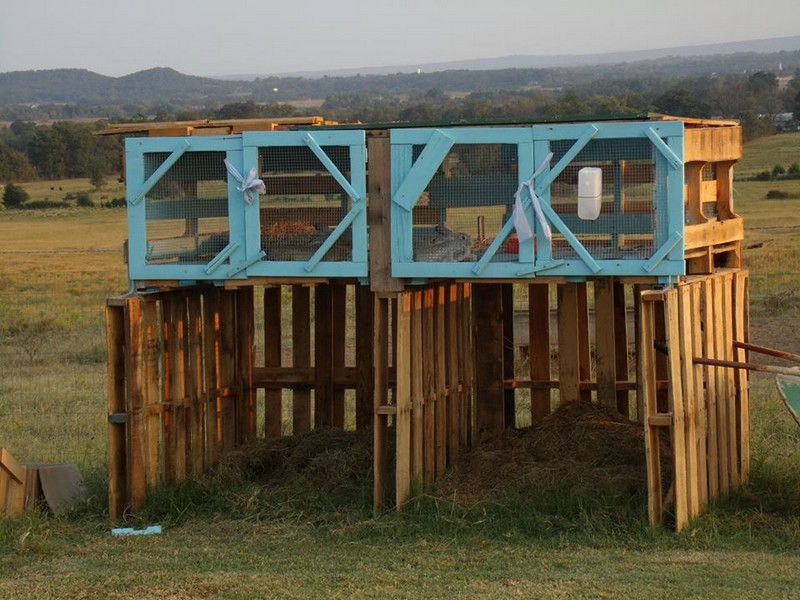
Garbage Can
Garbage cans make perfect compost tumblers for small-space gardeners. You can have them hanging high to get more heat from the sun all throughout the day.
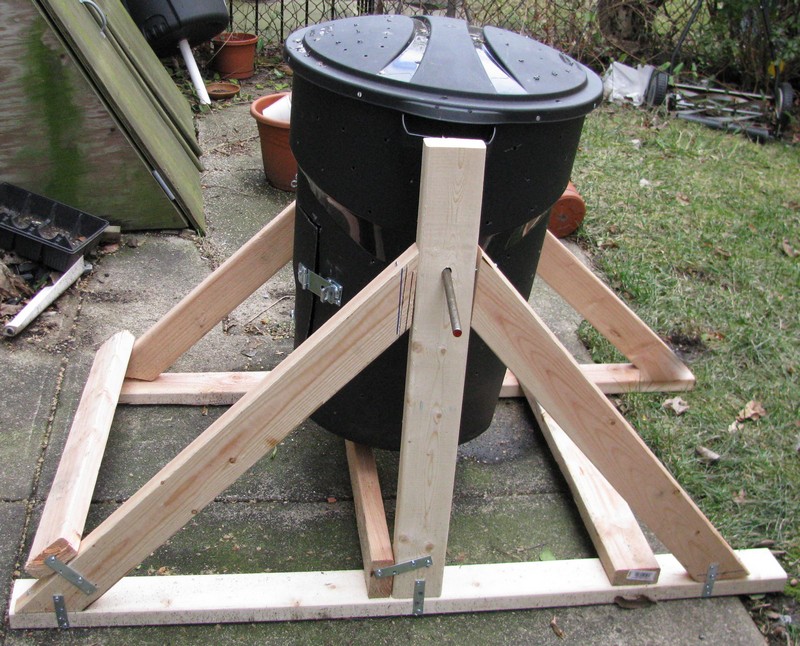
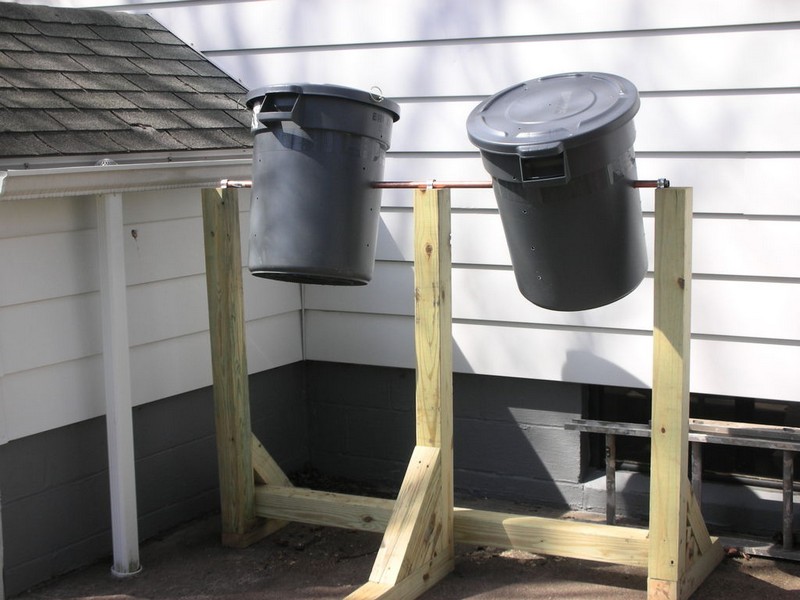

Straw Bale
A straw bale compost bin is great especially for wide areas since it is not a ‘permanent’ type of compost bin. This means you can put your compost mix directly in a future planting area. Since the inside walls of the bin are exposed to the elements breaking down in the center, they become part of your compost. Eventually, you can mix the remaining straw to compost further or spread it right away on your lot as a heavily composted mulch. Use straw, NOT hay as the latter contains seeds that can cause you problems with weed. Plus, they are usually more expensive than straws.
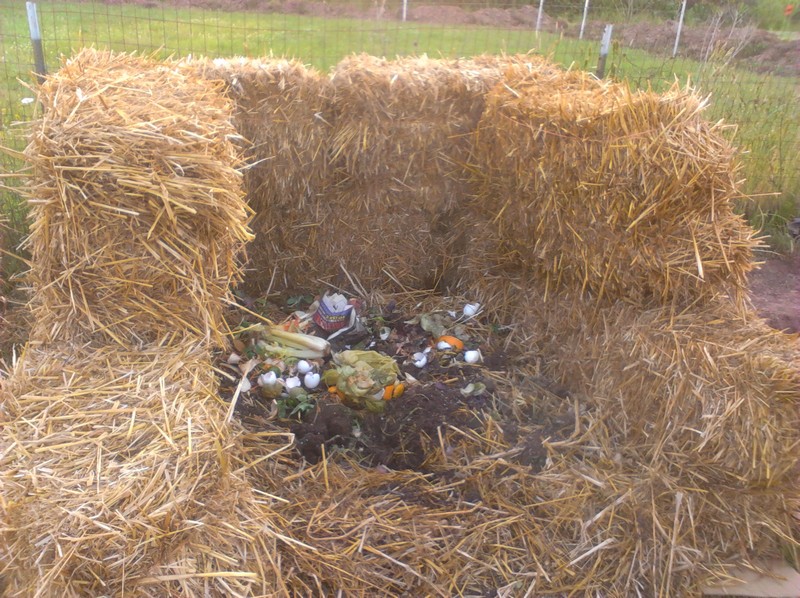

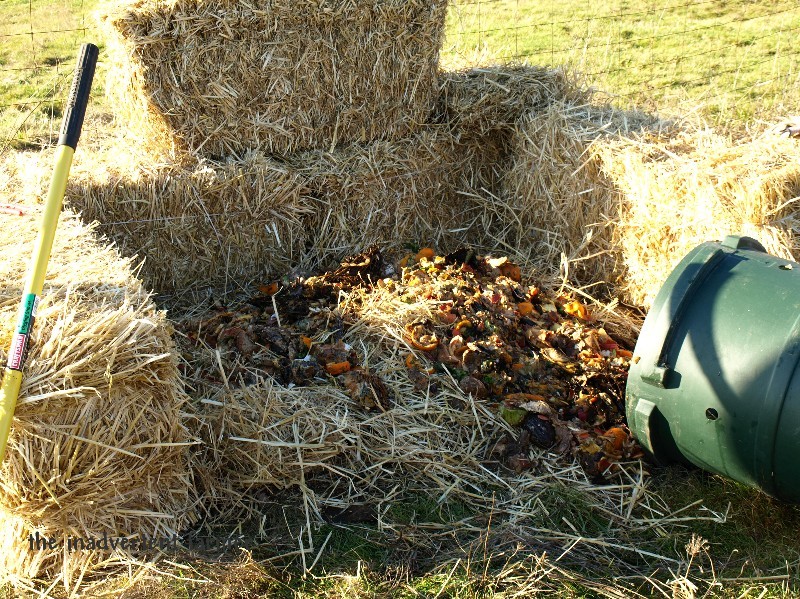
Plastic Gallon Drum
Using a plastic drum barrel to create a composting tumbler is a fantastic way to recycle and repurpose. The tumbler design allows for easy turning of the compost, which is essential for aeration and speeding up the composting process. To maximize space and efficiency, consider building a double-decker composting tumbler.

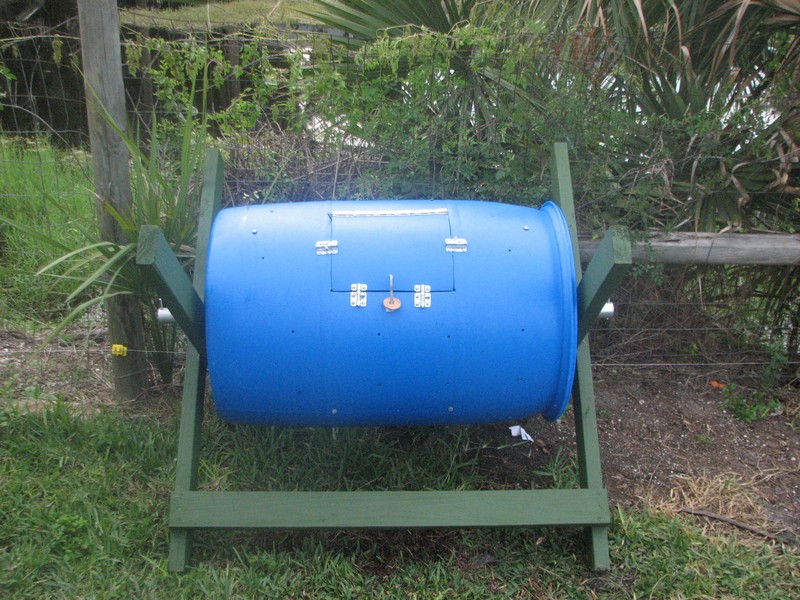
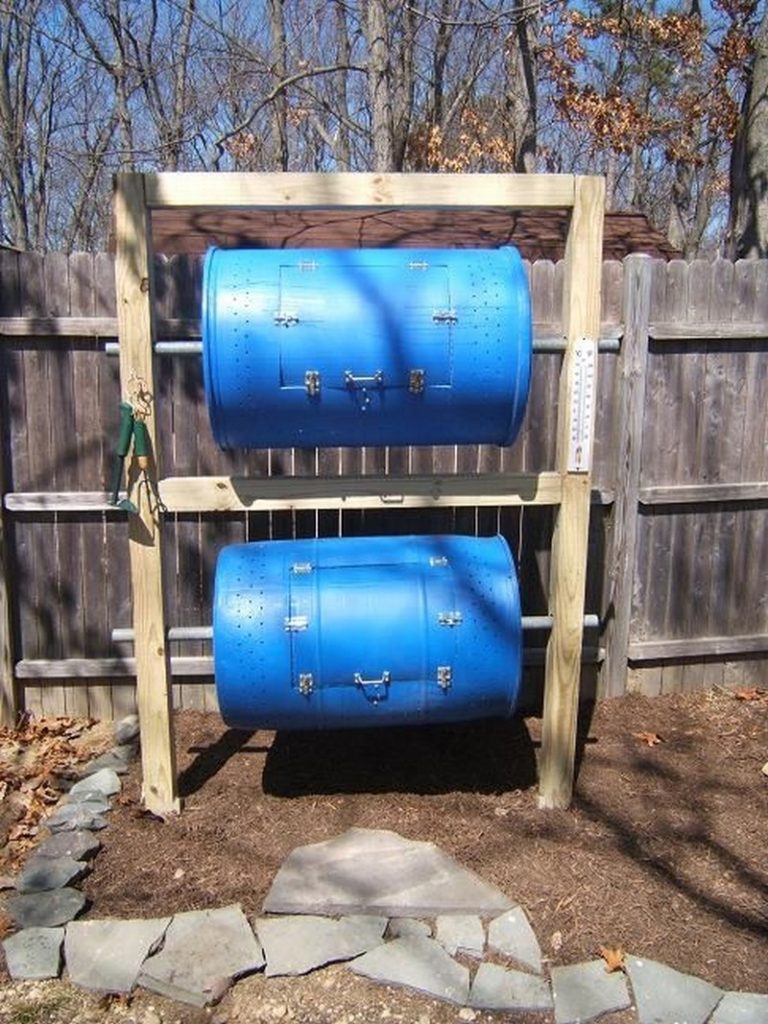
Wine Barrel
Wine barrels, with their rustic charm and sturdy construction, can be transformed into attractive and functional compost bins. Choose a wine barrel that’s in good condition. The wood should be intact without significant cracks or splits to ensure it can hold the compost material without leaking.
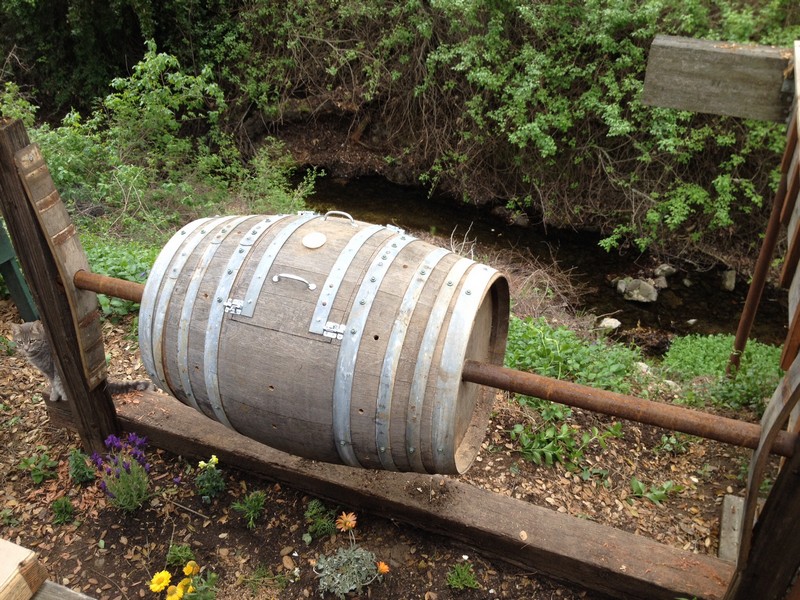

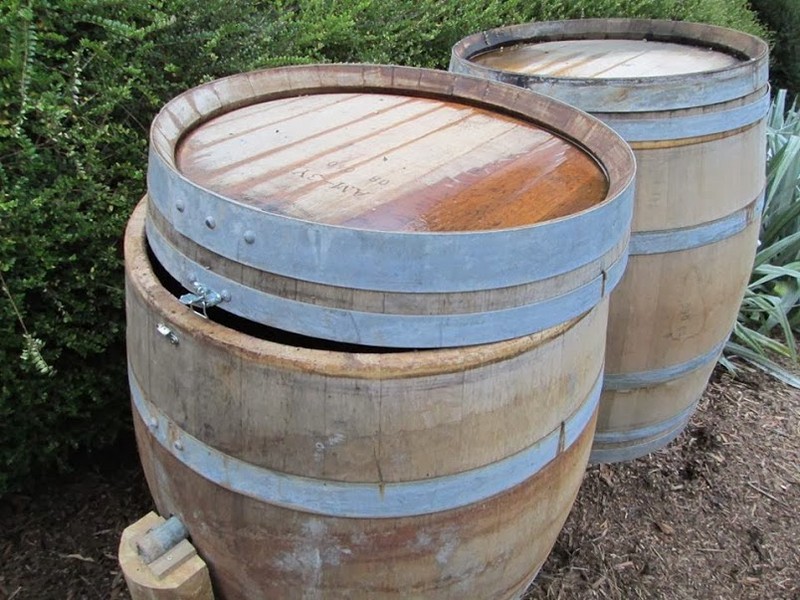
Storage Bin
Empty storage bins can be repurposed into compact compost bins, ideal for small gardens or yards. Drill holes in the bottom and sides of the bin for ventilation and drainage. Choose a lid that fits securely to deter pests. Place the bin on soil or grass rather than concrete or asphalt to allow drainage and access for beneficial microorganisms from the ground. This bin is perfect for composting kitchen scraps, yard waste, and appropriate paper products. Regularly turn the compost with a garden fork to aerate.
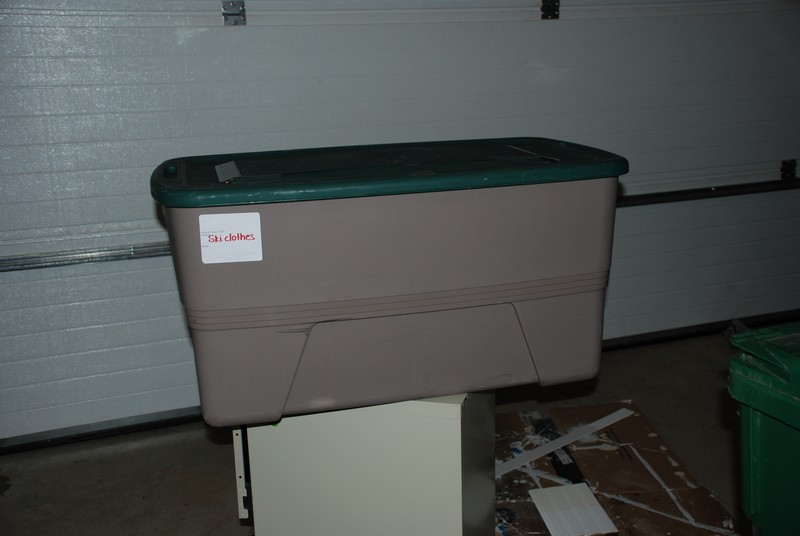
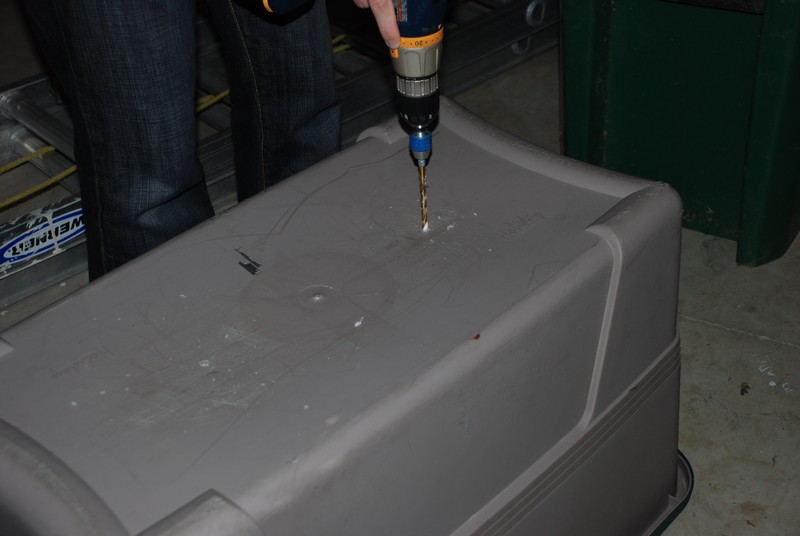
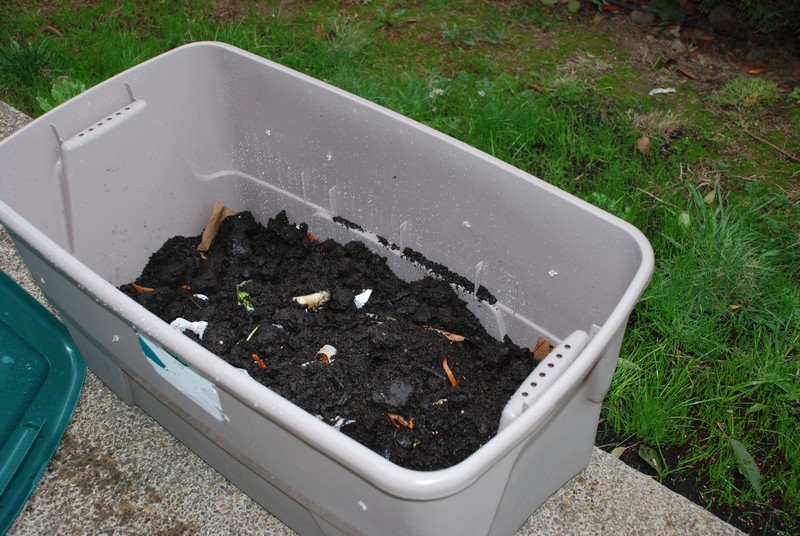
Indoor
Indoor composting is an excellent solution for those with limited outdoor space. An odor-free compost bin can be easily managed within an apartment or small home.
Select a container with a tight-fitting lid to minimize odors and deter pests. Bins designed specifically for indoor composting often contain charcoal filters to control smells. Place your bin in a convenient but out-of-the-way location, such as under the kitchen sink or on a balcony, if available. Consider a Bokashi composting system, which ferments kitchen waste, including meats and dairy, without odors. Using worms to break down waste, Vermicomposting is another effective indoor method.

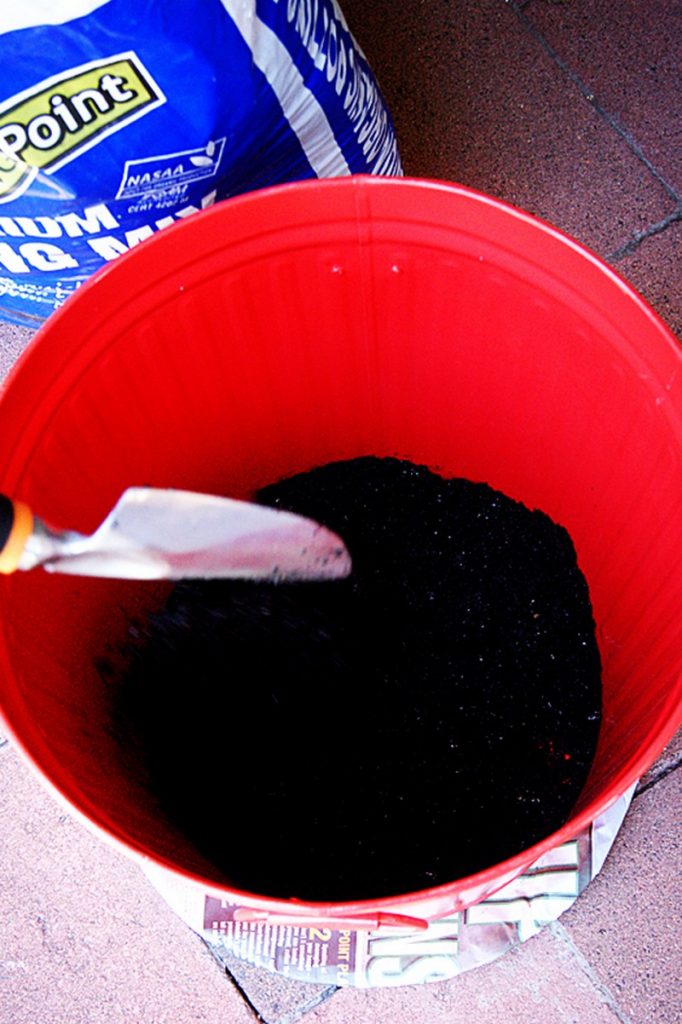
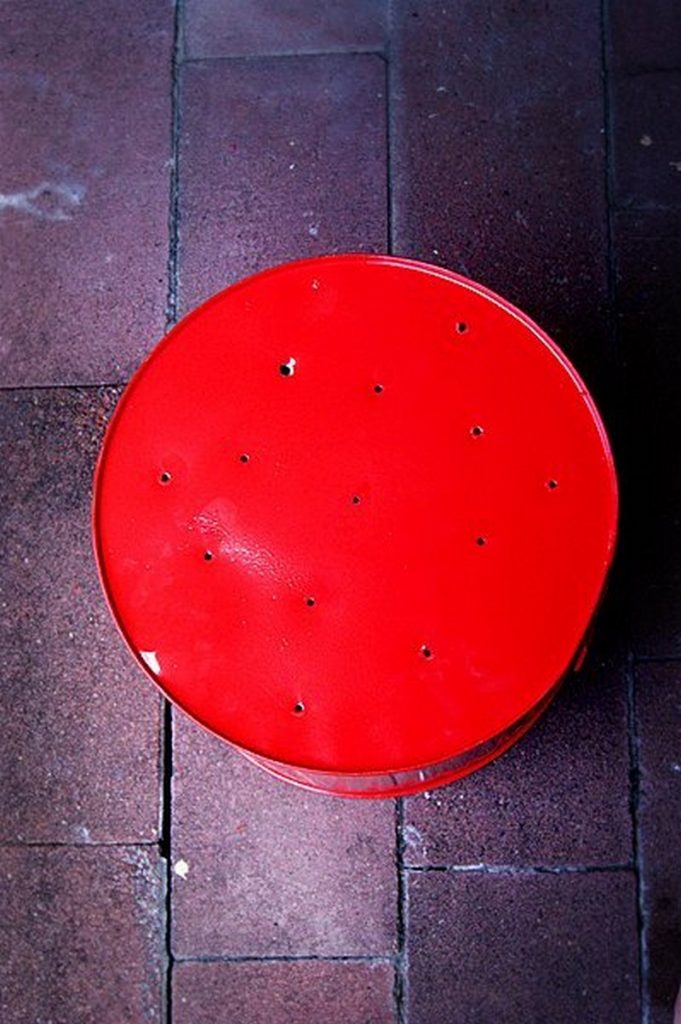
If you liked this, you might also like these gardening ideas…
Benefits of Compost Bin for Soil Health
A compost bin is an age-old practice that enriches the soil, supports sustainable gardening, and reduces waste. By turning kitchen scraps, yard waste, and other organic materials into compost, gardeners can create a rich, nutrient-dense soil amendment that benefits the earth in multiple ways. The process recycles organic materials and fosters a healthier garden and environment.
Below, we explore the myriad benefits a compost bin brings to soil health, shedding light on why it’s considered a cornerstone of eco-friendly gardening.
Enhances Soil Structure
Compost works wonders for the soil structure, making it more brittle and easier to work with. It helps sandy soil retain water more effectively and breaks up clay soils, improving aeration and drainage. This improved structure allows plant roots to penetrate more deeply, enhancing their access to nutrients and water, and making them more resilient to drought and disease.
Boosts Nutrient Content
One of the most significant benefits of compost is its ability to enrich the soil with essential nutrients like nitrogen, phosphorus, and potassium, which plants need to thrive. Unlike synthetic fertilizers, compost releases these nutrients slowly over time, ensuring that plants receive a steady supply throughout their growth cycle. This promotes healthier plant growth and reduces the risk of nutrient run-off into waterways.
Supports Beneficial Microorganisms
Compost is teeming with beneficial bacteria, fungi, and other microorganisms crucial in breaking down organic matter and making nutrients available to plants. These microorganisms also help suppress soil-borne diseases and pests, promoting a healthier garden ecosystem. By adding compost to the soil, gardeners can encourage the proliferation of these beneficial microbes, enhancing soil vitality and plant health.
Improves Water Retention
A compost bin can produce soil that holds moisture efficiently, which can be particularly beneficial during dry periods. By improving the soil’s water retention capacity, compost helps to ensure that plants have access to the water they need, reducing the need for frequent watering and helping to conserve water resources.
Encourages pH Balance
The soil’s pH level is crucial for plant health, as it affects the availability of nutrients. Compost can help to moderate soil pH, bringing it closer to neutral, which is ideal for most plants. This balancing effect can make a significant difference in the garden, helping to improve plant vigor and crop yields.
Reduces Erosion and Degradation
By improving soil structure and water retention, compost can also help to reduce soil erosion, a significant issue in many parts of the world. Healthy, well-structured soil is less likely to be washed or blown away, preserving topsoil and preventing land degradation.
Promotes Carbon Sequestration
Composting contributes to carbon sequestration, capturing and storing atmospheric carbon dioxide in the soil. By diverting organic waste from landfills (where it would decompose anaerobically and release methane, a potent greenhouse gas), composting helps reduce greenhouse gas emissions and combat climate change.
DIY Compost Bin Accessories and Tools
Creating a compost bin is a fantastic step towards sustainable living, but certain accessories and tools can be incredibly helpful to optimize the composting process and make it more efficient. These additions can enhance aeration, speed up decomposition, and make it easier to manage your compost.
Here’s some essential DIY compost bin accessories and tools that can elevate your composting game.
Compost Aerators
A compost aerator is designed to introduce air into the compost pile. Oxygen is a critical element in composting, as it supports the aerobic bacteria that break down organic material. DIY compost aerators can be as simple as a long, sturdy stick or pipe with a handle. By thrusting the aerator into various compost sections and twisting it, you can efficiently mix and aerate the pile, accelerating the decomposition process.
Compost Thermometers
Monitoring the temperature of your compost pile is crucial for understanding its health and activity level. A compost thermometer with a long probe can be inserted into the middle of the pile to check the internal temperature. High temperatures indicate active decomposition, while a drop in temperature may suggest the pile needs more green materials (nitrogen) or aeration. DIY enthusiasts can create a simple protective sleeve for a standard thermometer to adapt it for compost use.
Compost Screens
A compost screen is used to sift finished compost, separating the fine, usable material from larger, unfinished pieces that need more decomposing time. You can easily make one using a wooden frame and wire mesh. This DIY tool is particularly useful for gardeners looking to achieve a finer texture in their compost, ideal for top-dressing garden beds or potting mixes.
Compost Pails
A compost pail is incredibly useful for collecting kitchen scraps before they’re added to the compost bin. You can repurpose old buckets or containers, adding a charcoal filter to the lid to absorb odors. Decorating these DIY compost pails can also make them an attractive addition to your kitchen, encouraging all household members to contribute to the composting effort.
Moisture Meters
The moisture content of your compost pile is another critical factor to manage. While commercial moisture meters are available, DIY versions can be created using simple electronic components for those with some technical know-how. Maintaining the right moisture level ensures your compost remains active without becoming soggy or too dry.
Leaf Mulchers
A DIY leaf mulcher can be a game-changer for those with access to many leaves. Leaves are a great carbon source for your compost bin, but they decompose much faster when shredded. You can create a simple leaf mulching system using a metal barrel and a weed whacker or modifying a standard lawn mower.
Compost Bin Covers
A cover for your compost bin can help regulate moisture and temperature while keeping out pests. You can create a cover that fits your compost bin using repurposed materials like old tarps, burlap sacks, or wooden pallets. This DIY accessory is especially useful in areas with heavy rainfall or prevents animals from disturbing the compost.
Incorporating these DIY compost bin accessories and tools into your composting setup can significantly improve the efficiency and effectiveness of your composting efforts. Not only do they enhance the composting process, but they also embody the spirit of sustainability and recycling that composting itself promotes.
Composting Challenges and Solutions
While composting is an environmentally friendly way to recycle kitchen and garden waste into valuable soil amendment, it can come with its set of challenges. Understanding these potential issues and knowing how to address them is crucial for maintaining a healthy compost system. Here, we explore common composting challenges and offer practical solutions to ensure your composting efforts are successful and rewarding.
Odor Problems
Challenge: A well-managed compost bin should not emit unpleasant odors. However, a strong, foul smell often indicates an imbalance in the compost’s composition.
Solution: Ensure a proper balance between green (nitrogen-rich) and brown (carbon-rich) materials. If the compost is too wet or has too much green material, it can become anaerobic and smelly. Add more brown materials like dry leaves, straw, or sawdust to absorb excess moisture and restore balance.
Pest Attraction
Challenge: Compost bins can attract rodents, flies, and other pests, especially if they contain kitchen scraps.
Solution: Use a compost bin with a secure lid and consider adding a wire mesh base to deter rodents. Avoid composting meat, dairy, and oily foods, as these are more likely to attract pests. Regularly turning the compost can also discourage pests by burying food scraps and disrupting any nests.
Slow Decomposition
Challenge: Sometimes, compost piles can take longer to break down, leaving you with partially decomposed material.
Solution: Increase the pile’s temperature by ensuring it has enough nitrogen-rich materials. Regularly turn the pile to introduce oxygen, which speeds up decomposition. Chopping or shredding materials before adding them to the compost can also help by increasing the surface area for microbes to work on.
Too Wet or Dry
Challenge: Compost piles that are too wet can become smelly and slimy, while those too dry may not decompose effectively.
Solution: For a wet compost pile, add more brown materials to absorb the excess moisture. If the pile is too dry, add water gradually until it has the consistency of a wrung-out sponge. Covering the pile can also help retain moisture and protect it from excessive rain.
Poor Aeration
Challenge: Without adequate air flow, compost piles can become compacted and anaerobic, slowing down the decomposition process.
Solution: Regularly turn your compost to introduce air and prevent compaction. If turning is difficult, insert perforated PVC pipes into the pile to improve ventilation. Ensuring your compost has a mix of large and small particles can also enhance air flow.
Nutrient Imbalances
Challenge: Imbalances in the nutrient composition of your compost can lead to poor plant growth when used as a soil amendment.
Solution: Aim for a diverse mix of composting materials to create a balanced nutrient profile. Using a variety of green and brown materials ensures a good mix of nitrogen, carbon, and other essential nutrients. Periodically testing your compost can also help identify any deficiencies.
Space Constraints
Challenge: Not everyone has the space for a traditional compost pile or bin, especially in urban areas.
Solution: Consider vermiculture (worm composting) or Bokashi composting, which can be done indoors in smaller containers. These methods are suitable for small spaces and can still provide valuable compost for houseplants or a small garden.
Maintaining Interest and Commitment
Challenge: Composting requires ongoing attention and effort, which can be a hurdle for some.
Solution: Start small to keep the process manageable and celebrate the milestones, like your first batch of finished compost. Engaging with a community of gardeners or composters online or in your area can also provide support and motivation.
Composting can become more enjoyable and successful by addressing these challenges with practical solutions. Not only does it contribute to a healthier garden, but it also plays a significant role in reducing household waste and supporting the environment.
Conclusion
DIY compost bin ideas such as utilizing plastic gallon drums, setting up indoor composting systems, repurposing storage bins, constructing bins from pallets, or transforming wine barrels into compost containers not only contribute to a sustainable environment but also enhance the beauty and health of your garden. Each method uniquely recycles organic waste into nutrient-rich compost, supporting plant growth and soil vitality.










